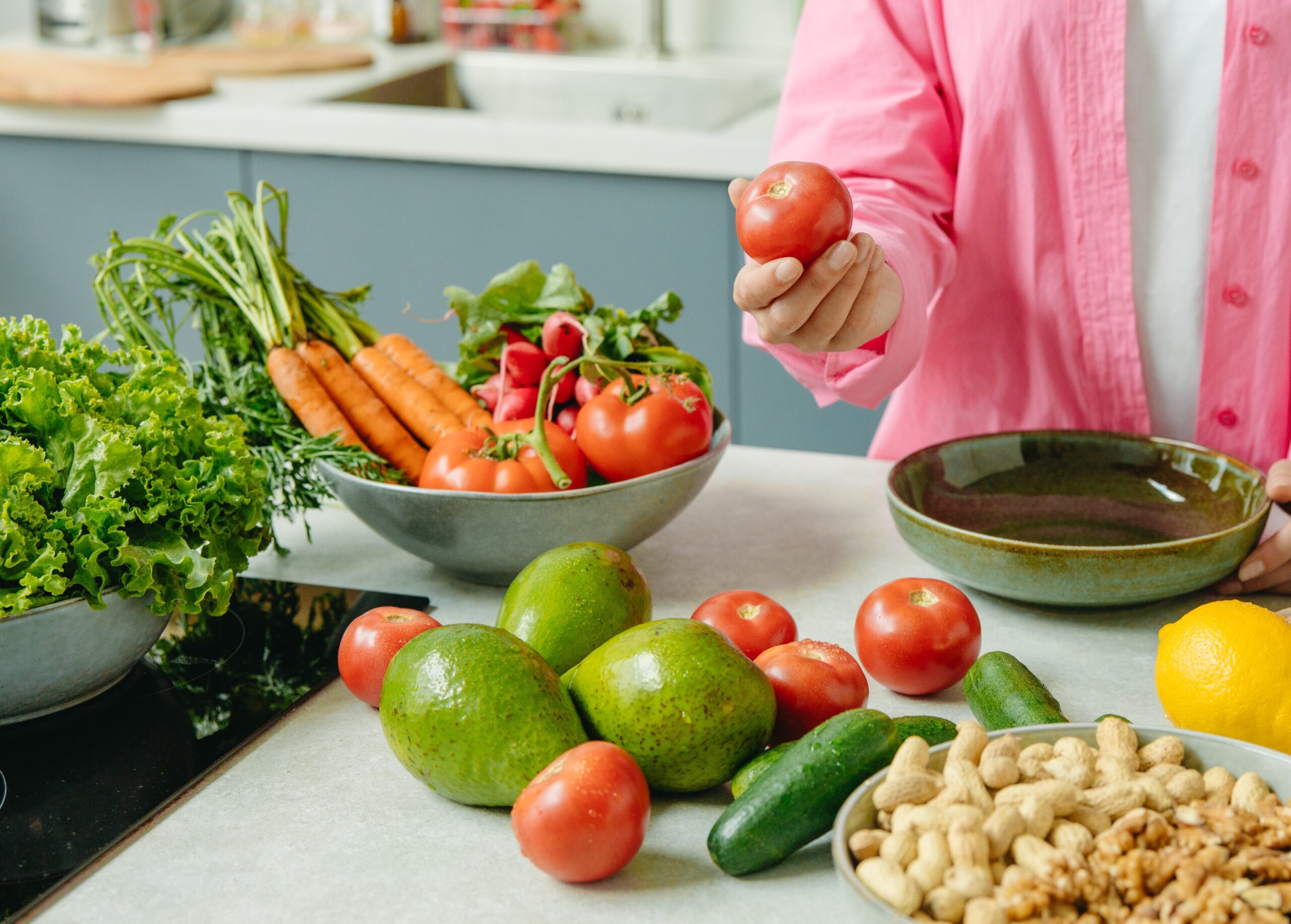Once just a buzzword, “clean eating” is now a popular eating style. What it means will depend on who you ask. The terms clean eating and clean diets are not federally regulated in the U.S., so interpretation by consumers and the marketing of “clean” products by the food industry can vary widely. Generally, clean eating is assumed to refer to foods that are as close to their natural state as possible, maybe organic, and most likely with minimal use of any chemical additives and preservatives. A clean diet may include whole fruits, vegetables, lean proteins, whole grains, and healthy fats while limiting highly processed snacks and other packaged foods with added sugar and salt. It may also be associated with terms like plant-based, grass-fed, sugar-free, or gluten-free. In summary, clean eating seemingly promotes health and wellness.
The concept is popular among younger consumers active with social media, which is the prime platform for celebrities, bloggers, and other high-profile personalities who chronicle their clean eating meals and recipes. A survey of more than 1,200 participants ages 14-24 years found that 55% were familiar with the term clean eating from social media, other online sources, or their peers. [1]
A survey by the International Food Information Council (IFIC) helps to further define consumer beliefs about clean eating. It found that “clean eaters” eat foods that are not highly processed, such as fresh or organic fruits and vegetables, and food products with a short, simple ingredients list. [2] Additional findings:
- Almost half of those surveyed considered themselves to be clean eaters, with “eating foods that aren’t highly processed,” “eating fresh produce,” “eating organic foods,” and “eating foods with a simple ingredients list” as the most cited definitions.
- 64% surveyed said they try to choose foods made with clean ingredients, defined as “not artificial or synthetic,” “organic,” “fresh,” or “natural.”
A Darker Side to Clean Eating
Clean eating can take on a different meaning when it introduces unrealistic expectations. In a survey of teenagers and young adults, though 71% defined clean eating as a healthy positive approach, a small percentage felt it was unhealthy due to its restrictive nature. [1] Because of its strong association with health, clean eating was viewed favorably according to another survey of college students even though it produced emotional distress (experiencing negative emotions if not able to follow the diet) and functional impairment (having a rigid eating schedule, ignoring natural hunger cues to eat more or less than is scheduled, interference with school work). [3] Some clean diets advise eliminating groups of foods like dairy, wheat, or refined sugars. The term “clean” also suggests that not following this pattern is “dirty,” which encourages food restrictions and a preoccupation with healthy eating. [1]
Although clean eating is not always focused on weight loss, it can mask symptoms of an eating disorder. When food restrictions are taken to an extreme to be “healthy,” clean eating can have negative health consequences that mirror those of eating disorders like anorexia nervosa, such as osteoporosis, amenorrhea, difficulty concentrating, and depression. [3]
Orthorexia or Just Trying to Be Healthy?
Orthorexia nervosa (ON) is a term coined in 1997 by physician Steven Bratman, though it is not yet a diagnosis in the Diagnostic and Statistical Manual of Mental Disorders (DSM-5). Currently there is no universally shared definition of ON and the diagnostic criteria is debatable. It is a condition that exhibits extreme preoccupation with healthy eating, with a goal of trying to achieve dietary “purity” but which leads to distress, anxiety, or obsessive-compulsiveness. Whereas a condition like anorexia nervosa is centered on weight loss, ON is centered on a healthy diet. Some researchers believe that ON is an extreme variant of clean eating. It is the pursuit of control with clean eating and restraint from eating (whether it be amounts or certain types of foods) that can crossover from healthy eating behaviors into ON.
Suggested criteria in defining ON include: [4]
- Obsessional or pathological preoccupation with healthy nutrition
- Emotional consequences (e.g., distress, anxiety) of non-adherence to self-imposed nutritional rules
- Psychosocial impairments in relevant areas of life as well as malnutrition and weight loss
The most common warning signs of ON include experiencing anxiety around food, and impaired functioning that disrupts daily life. This may mean avoiding social events involving food because one cannot eat what is offered. ON often restricts certain foods and nutrients, which may lead to an imbalanced diet. Because it wears a mask of health and wellness, it is not easily recognized as problematic and does not carry the stigma of other eating disorders like bulimia or anorexia nervosa.
It is important to emphasize that it is not harmful to enjoy and seek out healthful foods and recipes. Our society praises and promotes healthy behaviors because of high rates of obesity and other chronic diseases. Changing dietary habits to reduce the risk of these diseases can feel empowering, because other factors like family history and genetic predisposition cannot be changed. A healthy lifestyle can protect from developing chronic conditions that might otherwise mean hospital visits and bills, which causes anxiety and stress.
Therefore, it may be difficult to distinguish ON from normal health-promoting behaviors. People at higher risk for ON tend to have a history of an eating disorder or obsessive-compulsive disorder, have perfectionistic tendencies, or are working in a health/wellness-related field. The following are examples of statements that may help differentiate healthy eating from ON.
| Healthy Eating | Orthorexia Nervosa* |
| I plan out meals once a week so I can create a food shopping list and do meal prep for the upcoming week to save time later. | I spend more than 3 hours a day thinking about what I will eat and planning meals. |
| I am learning what foods are beneficial to my health and adding them to my diet, but I don’t follow special rules and allow “junk” foods occasionally because I enjoy them. | I find that in order to eat healthfully, I am eliminating more foods and creating more food rules. |
| I value nutrition but if the food does not taste good, I likely will not eat it, as I know there are many different delicious, healthful foods from which to choose. | The nutritional value of my food is more important to me than how good it tastes. |
| Eating healthful foods often makes me feel better with greater energy and better digestion. | I feel better about myself and have more self-confidence when I eat very healthy foods. |
| I know that restaurant meals can be indulgent, but I order what I enjoy and eat it mindfully. | I have a hard time eating out because I often can’t find anything on the menu that fits my diet. |
| I understand that I cannot always follow my usual healthy meal plan (such as when traveling with limited food choices), but I do the best I can to nourish myself with what is available. | I feel guilty, unclean, or anxious when I cannot follow my healthy meal plan. |
| I feel good about eating healthfully but it is not my main source of peace. | I feel at peace with myself and in total control when I eat healthfully. |
| The quality of my diet has improved, and it has enhanced my relationships, work, and school, as I have more energy and focus to work and am happier around my family and friends. | The quality of my diet has improved, but it has interfered with other areas of my life, such as my relationships, work, and school as it consumes much of my time and focus and I am spending less time with family and friends. |
*Adapted from a self-test for ON created by Steven Bratman [5]

The Instagram effect
The authors observed a potential risk from the Instagram feature in which users select accounts they wish to follow; if they choose mostly health and food-related accounts, they are constantly exposed to these ideas, potentially leading to the belief that extremes of healthy behaviors are normal and feeling increased pressure to emulate them. Sometimes celebrities and other “influencers” are perceived as authorities on health due to their physical appearance, which typically conforms with dominant societal beauty ideals, further encouraging users to follow their lead in health behaviors. Studies have shown that popular social media influencers such as these have a strong impact on their followers’ decisions and increasingly change their behaviors related to food choices and diet. [7]
Future Directions
There are proposals for the Food and Drug Administration to provide clear industry guidance and enforce labeling laws to police deceptive “clean” labeling claims on food products. [8] This may in turn help to reduce the use of unsupported health claims and protect vulnerable individuals such as those with disordered eating patterns.
Bottom Line
Clean eating can be a concept that promotes health and wellness by encouraging the selection of minimally processed fruits, vegetables, whole grains, healthy proteins, and healthy fats. However, it is an unregulated term, so the interpretation of what defines clean eating can vary widely, both among individuals and within the food industry that markets “clean” food products. Clean eating taken to an extreme has been associated with an increased risk of disordered eating patterns, such as orthorexia nervosa. If you feel increased anxiety around food and eating, avoid situations involving food, or have a preoccupation with food that interferes with daily activities, seek help from your doctor, a counselor, or a registered dietitian.
Last reviewed February 2022
Terms of Use
The contents of this website are for educational purposes and are not intended to offer personal medical advice. You should seek the advice of your physician or other qualified health provider with any questions you may have regarding a medical condition. Never disregard professional medical advice or delay in seeking it because of something you have read on this website. The Nutrition Source does not recommend or endorse any products.
